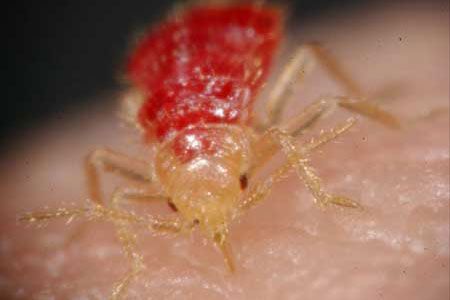Bedbugs are tiny blood-sucking insects that can infest homes and cause homeowners distress and discomfort. Bedbugs don’t transmit diseases, but their bites can lead to itchy welts and sleepless nights. Read our guide below to better understand bedbugs, why they infest, and what you can do to eliminate them and prevent them from returning.
What Are Bedbugs?
Bedbugs are small, wingless insects that feed on human blood. These nocturnal pests have plagued humanity for centuries, and have adapted to survive in our living spaces. You must understand their biology and lifestyle to understand how to control them.
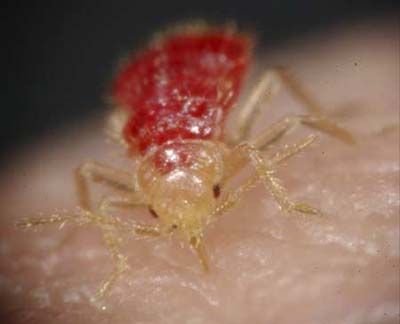
Bedbug Biology
Bedbugs belong to the Cimicidae insect family, and Cimex lectularius most commonly infest households. Adult bedbugs are oval-shaped, reddish-brown, and about the size of an apple seed. They have flat bodies that allow them to hide in tiny cracks and crevices.
American Museum of Natural History Entomologist Dr. Louis Sorkin says that when nymphs first hatch, they’re pale white or clear and only about a millimeter long, which makes them very difficult to see. “These pests are excellent at evading detection and can survive long periods without a blood meal,” he says.
Lifecycle of a Bedbug
Bedbugs go through several stages in their lifecycle. Read more below.
- Eggs: Tiny and white
- Nymphs: Immature bedbugs that molt five times before they reach adulthood
- Adults: Fully grown bedbugs that are capable of reproduction
Female bedbugs can lay hundreds of eggs in their lifetime, and Sorkin says infestations can produce a “sweet, pungent odor that some people say is like raspberries, coriander, or citronella.”
Bug-Food Nation
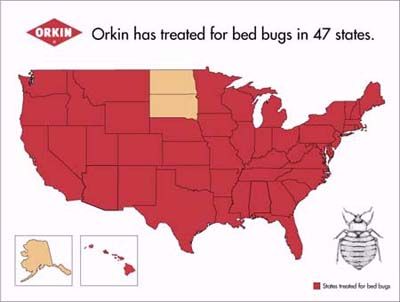
Orkin Director of Technical Services Frank Meek says the number of infestations in private residences is growing. He says international travel accounts for the uptick.
“The bedbug is a great hitchhiker,” he says. “One inseminated female can establish a colony, since she’s going to produce 200, 300 eggs in her lifetime.”
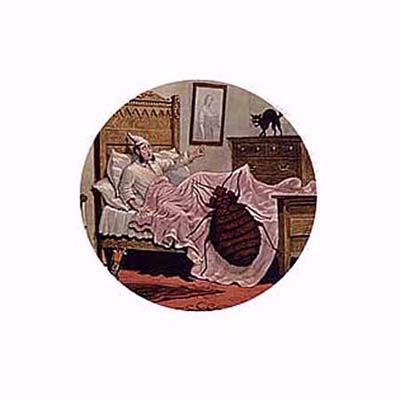
Anatomy of Annoyance
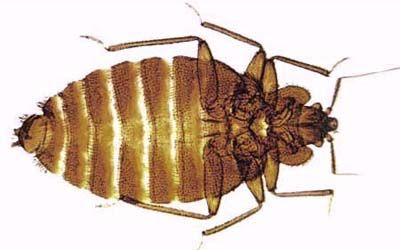
Bedbugs lurk behind walls and in crevices, says Dr. Dickson of Columbia University’s Mailman School of Public Health. “They’re so wafer-thin they can crawl into the smallest cracks, they’re avid feeders, and they’re as fast as greased lightning,” he adds.
Dickson says that the bugs seemed to disappear before the 1970s because of the overuse of DDT, but rebounded once the United States banned the use of DDT in 1972.
Taking One for the Team
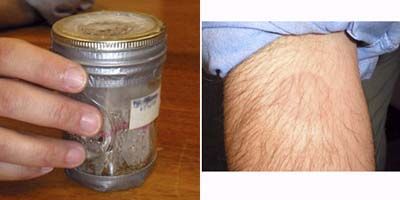
Fill ‘Er Up
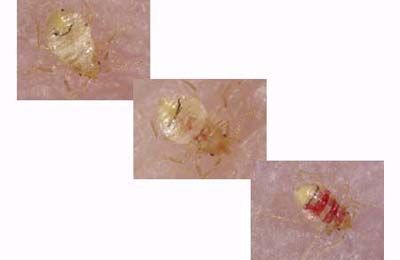
Sorkin says bedbugs are barely visible when they first hatch. “Under a microscope, you can see the probosis stylet moving in and out as the head moves up and down,” he says. “You actually see the gut filling up with blood.”
Sorkin says bedbugs can trigger allergic reactions when they inject saliva into humans, which can result in itchy, raised red welts.
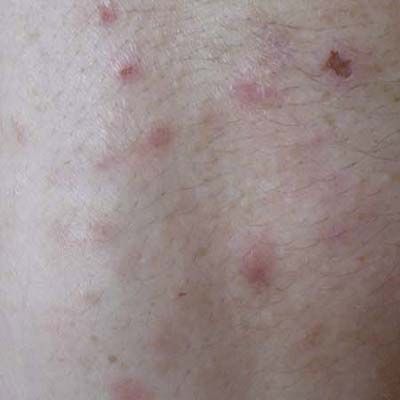
Battling Back
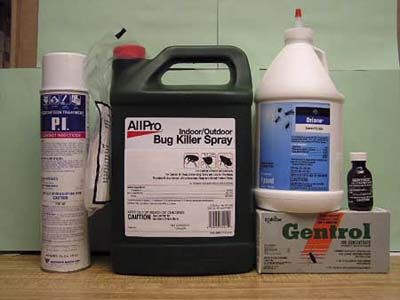
Professional treatment is sometimes necessary to eliminate bedbugs, but the do-it-yourself removal methods below can be helpful.
- Apply diatomaceous earth in cracks and crevices. This natural powder dehydrates and kills bedbugs and other insects.
- Use a steamer on mattresses and furniture. Steam can penetrate deep into materials, killing bedbugs on contact.
- Wash and dry bedding and clothing on high heat. High temperatures kill bedbugs and their eggs.
The Professional Touch
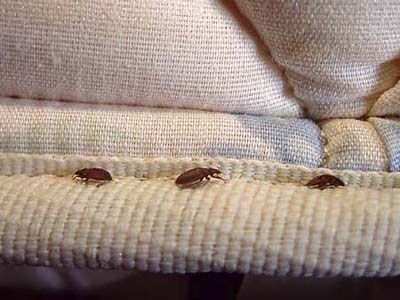
Professional pest control companies offer several treatment options, including those below.
- Chemical treatments: Applying insecticides to affected areas
- Freezing treatments: Using cold temperatures to eliminate bedbugs
- Heat treatments: Raising the temperature of a room to a level that kills bedbugs
Meek says the key to eradication is process more than product. “You can kill bed bugs with mild materials,” he says. “We utilize steam to kill the eggs and a product that’s basically rubbing alcohol to kill the adults. But the bugs are hard to find, so it’s a slow process.” When talking to a pest controller, make sure he has experience with bedbugs—and ask for references.”
Other Expert Options

Pros differ on proper methods of removal. Some blast the pests in their nests with limestone dust or diatomaceous earth that’s made of fossilized shells. These non-toxic desiccants kill the bugs and pose little risk to humans and animals.
A chemical-free alternative called ThermaPureHeat basically cooks the bugs to death. The process involves thermal-imaging photography, remote probes, and hydronic heating tubes or Mylar air ducts. It’s fast, safe, and effective, according to E-Therm president David Hedman. “We’re in and out in three to four hours,” he says. “We know that bedbugs die at a 130-degree surface temperature.”
The Cost of Bedbug Treatment
The process can be expensive no matter which prevention method you choose. “It’s hundreds of dollars and up,” says Martha Craft, Orkin’s public relations director. “But customers can save a little money if they’re willing to do the prep themselves”.
Prepare by thoroughly vacuuming, removing light switches and outlet covers, pulling carpet away from baseboards, carefully folding bedding, and washing it in hot water. One thing you shouldn’t do, though, is pitch the whole bed. “We don’t recommend that people throw out mattresses and box springs unless they’re structurally comprised,” Craft says. “Our treatment kills both adults and eggs inside.”
The cost of bedbug treatment can vary widely depending on the severity of the infestation and the method you choose. Professional treatments typically range from $300 to $650 per room. Some methods, such as heat treatment, may cost more, but offer quicker results.
*Cost data in this article sourced from Angi.
It’s Not Just the Bugs That Hurt
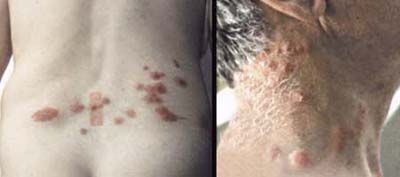
Bedbugs are a nuisance, but they don’t transmit diseases to humans. Their bites can, however, cause various health issues, including those below.
- Allergic reactions: Some individuals may have severe reactions to bedbug bites, which lead to significant discomfort.
- Anxiety and insomnia: The presence of bedbugs can cause severe psychological stress and sleep disturbances.
- Skin infections: Scratching bites can lead to secondary skin infections.
Signs of a Bedbug Infestation
You must identify a bedbug infestation early to effectively treat the problem. Below are some signs that can indicate the presence of these pests.
Visual Indicators
- Dark spots that are the size of a period, which is bedbug excrement
- Eggs and eggshells
- Live bedbugs in cracks and crevices
- Small, rust-colored stains on mattresses or bedding from crushed bugs
Physical Symptoms
- Itchy, red welts on the skin, often in a line or cluster
- Unexplained bites that appear overnight
Where Do Bedbugs Hide?
Bedbugs can easily conceal themselves, and hide close to humans so they have easy access to food. Below are some common places they might hide inside your home.
- Bed frames and headboards
- Behind wallpaper or picture frames
- Box springs
- Cracks in furniture
- In electrical outlets
- Mattress seams and tags
How Bedbugs Spread
Understanding how bedbugs spread is the key to preventing infestations.
Common Methods of Transmission
Bedbugs can spread by hitchhiking on luggage, clothing, or furniture, moving between apartments in multi-unit buildings, or by traveling on second-hand furniture or clothing.
High-Risk Locations
Certain locations are prone to bedbug infestations, including those below.
- Apartment buildings: Bedbugs can easily move between adjacent units.
- Dormitories: Shared living spaces in dorms can be host to rapid spreading.
- Hotels and motels: Bedbugs frequently spread in these environments because of high turnover rates.
- Movie theaters: Dark, upholstered seating provides a hiding place for bedbugs.
- Public transportation: Bedbugs can travel on seats and personal belongings.
Ounce of Prevention, Pound of Cure
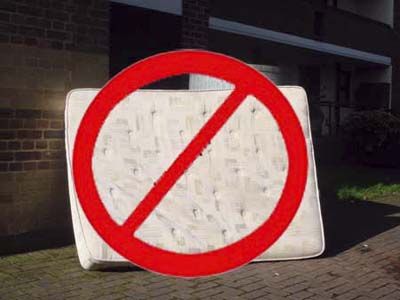
There are simple steps you can take to lessen the likelihood of infestation. Consider the tips below.
Travel Precautions
- Check luggage before you bring it it into your home: Carefully inspect and vacuum luggage upon returning from a trip.
- Inspect hotel rooms upon arrival: Check the mattress, box spring, and headboard for signs of bedbugs.
- Keep luggage off the floor and bed: Use luggage racks to keep bags elevated.
Home Prevention Techniques
- Be cautious when buying second-hand furniture: Thoroughly inspect and clean used items before bringing them inside.
- Reduce clutter to eliminate hiding spots: Keep your home tidy and organized.
- Vacuum regularly, especially around the bed: Regular cleaning can help you catch any bedbugs that may have entered your home.
- Use bedbug-proof mattress and box spring encasements: These encasements prevent bedbugs from hiding in your mattress.
